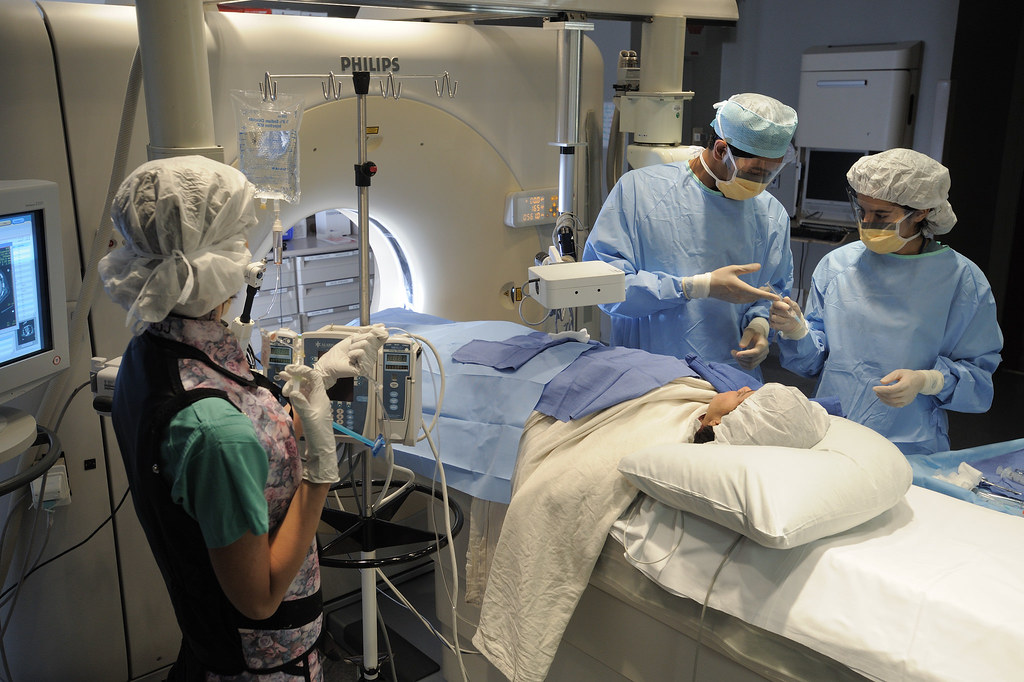FAQs
1. What are the common side effects of theranostics?
While theranostics aims to minimize harm to healthy tissue, some common side effects can occur, often milder than conventional systemic therapies. These may include fatigue, nausea, dry mouth, and temporary changes in blood cell counts. Specific side effects depend on the agent and target organ.
2. Who is eligible for theranostics treatment?
Eligibility is highly specific to the disease and the available theranostic agent. Generally, patients are selected based on the presence of specific molecular targets (identified via a diagnostic scan) on their disease cells. Often, it’s considered for advanced or metastatic diseases that have shown resistance to conventional treatments.
3. How long does a theranostics treatment typically take?
A theranostics treatment cycle usually involves an initial diagnostic scan (which takes a few hours), followed by a therapeutic infusion that can last from minutes to several hours. Patients may need to stay in a specialized facility for a short period after therapy due to radioactivity. The full treatment course typically involves multiple cycles spread over weeks or months.
Reference
1. Kalash, R. S., Lakshmanan, V. K., Cho, C. S., et al. (2016). Theranostics. In Biomaterials nanoarchitectonics (pp. 197-215). William Andrew Publishing.
2. Sandach, P., Fendler, W. P., & Herrmann, K. (2019). Theranostics of solid tumors: renaissance of a longstanding concept. best practice onkologie, 14, 526-534.
3. Li, H., Gong, Q., & Luo, K. (2024). Biomarker-driven molecular imaging probes in radiotherapy. Theranostics, 14(10), 4127.
4. Muthu, M. S., Leong, D. T., Mei, L., et al. (2014). Nanotheranostics˗ application and further development of nanomedicine strategies for advanced theranostics. Theranostics, 4(6), 660.
5. Song, X., Wang, R., Gao, J., et al. (2022). Construction of a biotin-targeting drug delivery system and its near-infrared theranostic fluorescent probe for real-time image-guided therapy of lung cancer. Chinese Chemical Letters, 33(3), 1567-1571.
6. Nagarajan, Y., Chandrasekaran, N., & Deepa Parvathi, V. (2025). Functionalized nanomaterials in pancreatic cancer theranostics and molecular imaging. ChemistryOpen, 14(1), e202400232.
7. Kaur, C. D., Mishra, K. K., Sahu, A., et al. (2020). Theranostics: New era in nuclear medicine and radiopharmaceuticals. In Medical isotopes. IntechOpen.
8. Svenson, S. (2013). Theranostics: are we there yet?. Molecular pharmaceutics, 10(3), 848-856.
9. Bhujwalla, Z. M., Kakkad, S., Chen, Z., et al. (2018). Theranostics and metabolotheranostics for precision medicine in oncology. Journal of magnetic resonance, 291, 141-151.
10. Turner, J. H. (2024). Theranostics: Timing is everything. Cancer Biotherapy & Radiopharmaceuticals, 39(9), 611-618.
11. Dhandapani, R., Sethuraman, S., & Subramanian, A. (2019). Nanohybrids–cancer theranostics for tiny tumor clusters. Journal of Controlled Release, 299, 21-30.
12. Choudhury, P. S., & Gupta, M. (2018). Differentiated thyroid cancer theranostics: radioiodine and beyond. The British journal of radiology, 91(1091), 20180136.
13. Sheikhbahaei, S., Sadaghiani, M. S., Rowe, S. P., et al. (2021). Neuroendocrine tumor theranostics: an update and emerging applications in clinical practice. American Journal of Roentgenology, 217(2), 495-506.
14. Iravani, A., Violet, J., Azad, A., et al. (2020). Lutetium-177 prostate-specific membrane antigen (PSMA) theranostics: practical nuances and intricacies. Prostate cancer and prostatic diseases, 23(1), 38-52.
15. Krasniqi, A., D’Huyvetter, M., Xavier, C., et al. (2017). Theranostic radiolabeled anti-CD20 sdAb for targeted radionuclide therapy of non-Hodgkin lymphoma. Molecular cancer therapeutics, 16(12), 2828-2839.
16. Wu, Y., Vazquez-Prada, K. X., Liu, Y., et al. (2021). Recent advances in the development of theranostic nanoparticles for cardiovascular diseases. Nanotheranostics, 5(4), 499.
17. Liu, H., Zhong, W., Zhang, X., et al. (2021). Nanomedicine as a promising strategy for the theranostics of infectious diseases. Journal of Materials Chemistry B, 9(38), 7878-7908.
18. Nag, S., Mitra, O., Tripathi, G., et al. (2023). Exploring the theranostic potentials of miRNA and epigenetic networks in autoimmune diseases: A comprehensive review. Immunity, inflammation and disease, 11(12), e1121.
19. Królicki, L., & Kunikowska, J. (2022). Theranostics–present and future. Bio-Algorithms and Med-Systems, 17(4), 213-220.
20. Ryu, J. H., Lee, S., Son, S., et al. (2014). Theranostic nanoparticles for future personalized medicine. Journal of controlled release, 190, 477-484.
